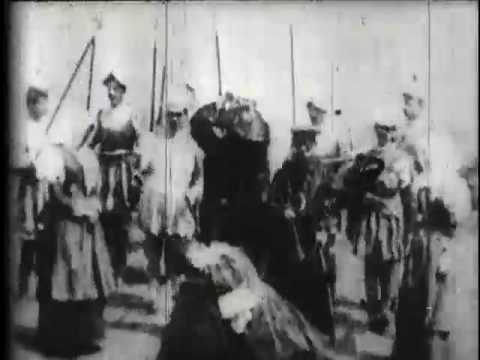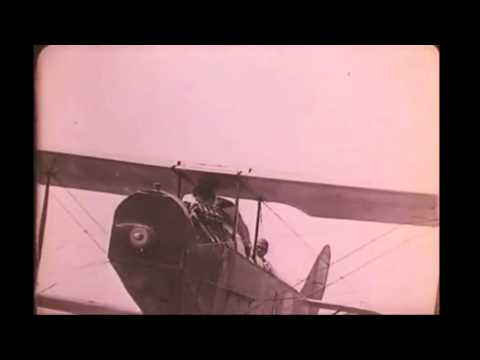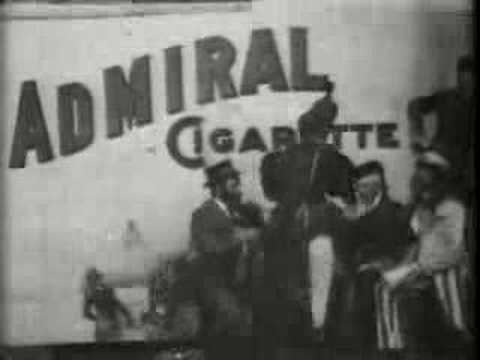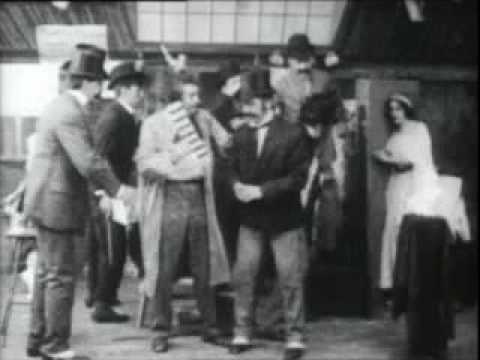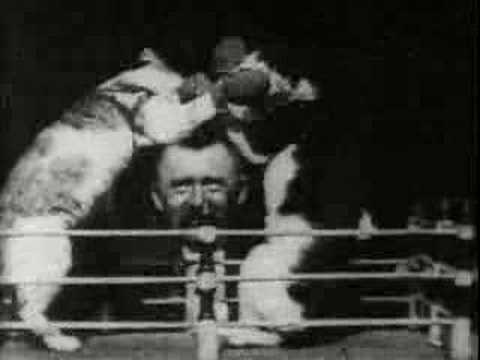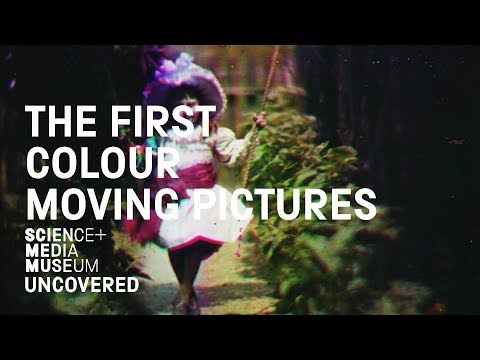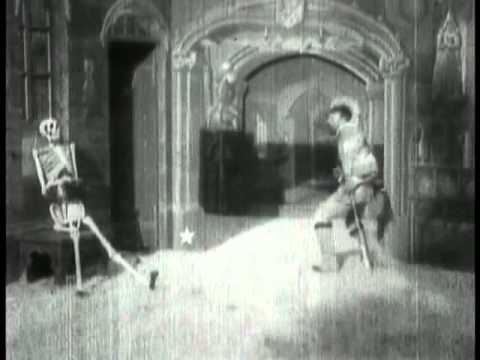10 The First Special Effect
Before CGI became the first choice for special effects in movies, the earliest filmmakers had to do all their special effects manually. The first special effect was created by Thomas Edison, who patented the “Kinetograph,” a motion picture camera. Most of Edison’s films were lost because he melted them down to recycle their silver content. As shown in the video above, one that remains is The Execution of Mary, Queen of Scots. An important milestone in motion pictures, this film has the first recorded use of a special effect. In the movie, the actress playing Mary kneels down at the chopping block. The headsman raises his axe, and just before he swings it down, the camera stops to allow the actress to be replaced by a mannequin. The other actors remain perfectly still. Once the mannequin is in place, the camera resumes filming, and the axe comes down. The effect wouldn’t cause a stir today, but audiences in the 1890s had no idea what had happened. They were horrified. It’s said that some even believed that an actress had given her life for the film.
9 The First Stunt Gone Haywire
We recently told you about The Grim Game, Harry Houdini’s second film, which was found after being lost for almost a century. Although The Grim Game (shown above) is considered Houdini’s greatest film, it became famous during its production for the airplane scene, a stunt that went haywire. A stuntman was supposed to climb out of a moving plane on a rope ladder, descend to a second plane flying just below, and then jump in and take control. When the scene was filmed, however, there was a sudden updraft that caused the two planes to collide. Robert E. Kennedy, the stuntman, narrowly escaped being crushed between the two planes. Although Kennedy was unharmed, he was dangling from the upper plane as both aircraft hurtled toward the ground. It was easy to retake control of the lower airplane, but the upper one was pushed upside down. The pilot somehow kept the plane from going into a nosedive and then managed to land the plane upside down, smashing the propeller and ripping away most of the upper wing. One of the pilots was injured, but fortunately, there were no deaths. As the accident made headlines across the country, Houdini—ever the showman—was quick to take advantage of it. Not long after the accident, the magician broke his wrist fighting four extras in the movie. Although it had been Kennedy dangling from the rope ladder, Houdini claimed it had been him and that his injury was from the accident. The story spread, increasing the film’s popularity far more than if there had been no mishap.
8 The First Advertisement
Even though we know they’re a necessary evil, no one likes watching commercials. But surprisingly, commercials didn’t start with television. They’ve been around ever since images were first captured on film. Some of the earliest ads were the films themselves, made with the support of railroad corporations. At the very least, they were the first instances of product placement in film. This eventually gave way to other products like alcohol and tobacco making their way onto the silver screen. Thomas Edison was well-known for being antismoking. Believing that smoking damaged the brain, he forbade any cigarettes in his labs. But years before he became an outspoken opponent of nicotine, he shot the first film advertisement registered with the Library of Congress: Admiral Cigarette, the short video shown above. The ad shows a group of men sitting beside a box that advertises the brand. Already smoking, the Admiral Cigarette showgirl leaps out of the box. Cigarettes rain from the sky, and she hands each of the men a smoke. Then she reaches down to pull out more handfuls of cigarettes, scattering them over the floor. Apparently satisfied by this, the men unfurl a banner that says, “WE ALL SMOKE.” In 1897, filmed ads were so novel that they were shown in free outdoor screenings via rooftop projection to thousands of people. One ad was such a disruption to traffic that the projectionist was detained by police.
7 The First Claymation
It could be said that Claymation was born in 1897 when William Harbutt was teaching a sculpting class and needed a type of clay that wouldn’t dry as fast. He created “plastine,” a compound of calcium salts, petroleum jelly, and aliphatic acids. A combination that never dried out and allowed for continuous manipulation, the material is still used today. The oldest movie to use plastine for clay animation, along with stop-motion effects, was the 1908 film The Sculptor’s Welsh Rarebit Dream by the Edison Manufacturing Company. We wouldn’t recognize it as Claymation today because the movie rarely used the effect. That same year, Edison’s company also created The Sculptor’s Nightmare, which is the oldest surviving film that actively manipulates clay to produce the likeness of a person. In the three-video playlist above, you can see these early Claymation techniques in the second and third parts of The Sculptor’s Nightmare. In the film, a political club debates who will succeed Theodore Roosevelt as president. The members disagree, and each goes to the same sculptor to have a bust made of their favorite candidate. But the sculptor uses their money to take his model to dinner instead. After getting drunk, he’s thrown in jail. There, he has a nightmare where the sculpting of three clay busts of the presidential candidates is animated with stop-motion photography. The movie ends after the animated construction of a clay sculpture of Roosevelt.
6 The First Animation
James Stuart Blackton, the “father of film animation,” began his career as a journalist and vaudeville cartoonist. In 1896, while covering the story of Thomas Edison’s early film projector, the Vitascope, Blackton was so impressed that he bought one. Blackton and his partner founded the American Vitagraph Company, which produced its first prototype for an animated movie in 1900. Called The Enchanted Drawing, the film uses stop-motion effects to show Blackton taking a drink from his drawing. This paved the way for his 1906 film, Humorous Phases of Funny Faces, considered the world’s first true animation. Some of the film showed the artist drawing the characters on a chalkboard, but the rest was pure animation. Humorous Phases was quite primitive, with parts looking more like cutouts than actual animation. Only five years later, the much more sophisticated Little Nemo was made—partially in color—and remains impressive to this day. Little Nemo treats itself like a documentary of the animation process. It runs for over 10 minutes, but the animation begins around the 8:24 mark in the video above. Like Humorous Phases, Little Nemo mixes live action with animation. But the change in Little Nemo happens in an abrupt, almost magical moment when the animation switches to color, which was presumably hand drawn on the film itself.
5 The First Cat Movie
We credit the Internet for making cat videos popular, but the trend of cute animals on film dates well before lolcats. As shown above, the first cat video, The Boxing Cats, was filmed over 100 years ago in 1894 by Thomas Edison. In the film, two cats are placed in a miniature boxing ring to “fight.” Each one is put in a shoulder harness to keep the animal upright while its paws are wrapped in little boxing gloves. At times, the “action” gets so intense that a well-dressed man standing behind the ring has to separate the cats. Presumably, he is Dr. Welton, owner of the cats, judging by a title card that refers to the cats as his. The film is 22 seconds long and proves that people have always been obsessed with cats on film. While it’s the first cat movie filmed for entertainment purposes, it is not the first cat movie overall. That dubious honor is believed to belong to Falling Cat, a scientific analysis of why cats always fall on their feet. Predating both films, though, is a motion capture of a cat by Eadweard Muybridge for his animal locomotion studies. Muybridge used a setup of multiple cameras in sequence to record continuous movement, one of which was recording a cat.
4 The First Color Film
For years, the first color film was believed to date from 1909. But recently, a color reel shot in 1901–02 was rediscovered in the National Media Museum. Surprisingly, it used a superior process to the later technology. Watch this video on YouTube Edward Raymond Turner had experimented with a system that used blue, red, and green filters to record images. However, the technology was regarded as a failure at that time because the images came back blurry. The projector had superimposed the images on top of each other, so the result was an inferior film. In reality, Turner had created a camera that successfully captured color; it was the projector that didn’t work. Film historians had known about Turner’s work, but it fell into obscurity after George Albert Smith’s invention of the Kinemacolor system eclipsed it. Smith used a two-color process believed to be based off Turner’s work. But once the National Media Museum set out to prove that Turner’s techniques actually worked, his films returned to the spotlight. The museum reconstructed Turner’s test reels using the process he described. But this time, they did it with computers instead of the old projector technology that didn’t work. As a result, Turner’s process was deemed both viable and superior to Smith’s. More than 100 years after his failed invention was made, Turner became known as the “father of color cinema.”
3 The First Horror Movie
Filmed in 1896, the first horror movie is entitled The Devil’s Castle (aka The Haunted Castle). A film by the legendary director Georges Melies (who was the subject of the 2011 Martin Scorsese film Hugo), The Devil’s Castle was believed to be lost until a copy was found in New Zealand in 1988. As shown in the video above, the horror-comedy was made to amuse, so it’s hardly what we would consider horror today. Still, it has many familiar elements that horror lovers will recognize from later films. The film features a bumbling protagonist who wanders into a haunted castle. The evils of the castle prank and eventually battle him, but he fends off the castle’s wicked master with a crucifix. Only three minutes long, the movie is filled with the common horror monsters we know today. Some people believe The Devil’s Castle is also the first vampire movie because it opens with a bat transforming into a man. Notably, the bat’s flight pattern and design became the standard for later films. There are even ghosts that appear toward the end, leading some to call it the first ghost movie as well. Another common motif that moviegoers will recognize is the deformed assistant. Most important, though, are the camera tricks employed by Melies, which combine stop-motion effects and puffs of smoke to create the illusion of magic.
2 The First Comedy, Remake, And Rip-Off
The Waterer Watered (also known as The Sprinkler Sprinkled) of 1895 is believed to be the first comedy film ever made. Like many of the earliest movies, this gag film is short—well under one minute—and features a stationary camera. As shown in the video above, the plot is simple. As a man waters a garden, a boy sneaks up behind him and steps on the hose. When the gardener checks the nozzle to see what happened to the water flow, the boy releases the hose, spraying the man in the face. There’s a quick chase, and the boy gets caught and rather halfheartedly spanked. The movie was made by the Lumiere brothers, two pioneers of film. Their comedy was so popular that the brothers made at least one more version. But in the earliest days of cinema, copyright laws were weak and not always enforced, allowing others to make their own versions. Although George Melies made one, a more sophisticated copy called The Biter Bit came from Bamforth and Company. This version had a greater sense of space and depth because the trickster is in the foreground hiding behind a tree. After the gag plays out, the gardener chases the boy around the tree before spraying him in the face with the hose.
1 The First Film
The identity of the oldest film in existence is the subject of much debate. It really depends on what you consider a film. Some people give credit to Eadweard Muybridge, who invented the zoopraxiscope. Muybridge used still cameras, triggered by trip wires, to capture multiple images almost simultaneously. Then he projected the results with his zoopraxiscope. His invention resulted from a bet to see if a horse had all its feet off the ground when in full gallop. (By the way, it did.) But Muybridge didn’t use a motion picture camera, so the Guinness Book of World Records credits Roundhay Garden Scene (shown above) as the oldest known movie. Filmed by Louis Le Prince, the inventor of motion picture film, this short movie is only a two-second test that captures a few people walking around his father-in-law’s garden. However, an older Le Prince film may have been found. Called Man Walking Around A Corner, it was supposedly filmed in 1887, predating Roundhay by a year. The earlier film is only a few frames long and features a man walking around a corner in the city of Leeds. Le Prince is believed to have sent the film in a letter to his wife to show her where he was at the time. Nathan keeps a Japan blog where he writes about the sights, expat life, and finds Japanese culture in everyday items. You can also find him on Facebook and Twitter.
